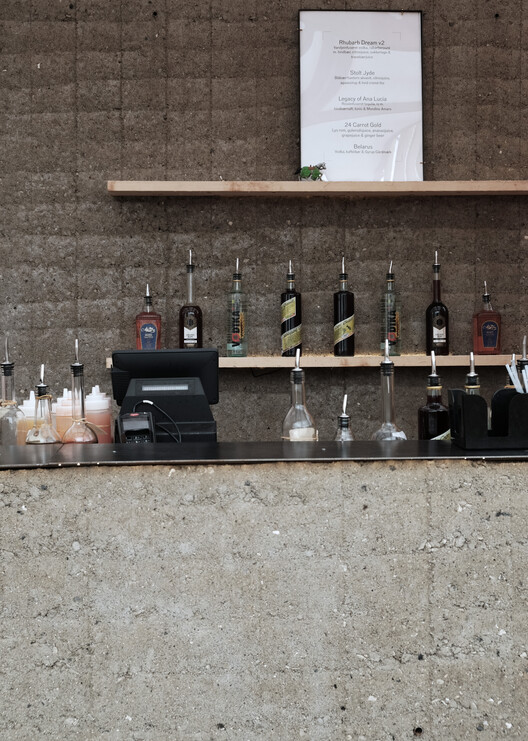
-
Architects: ReVærk
- Area: 42 m²
- Year: 2017
-
Photographs:Anna Friedrich
-
Manufacturers: ReVærk
-
Lead Architects: Mathias Ørum Nørgård, Simeon Østerlund Bamford, Kristoffer Hedegaard Andreasen

Text description provided by the architects. Bar Pavilion – A statement of temporality and place-boundness featuring rammed earth walls and wooden structure

This project is a clear message of the strength in using local and readily available raw material in combination with a simple fabrication process - presented by the Danish studio ReVærk for a local festival.

The Clay Pavilion’s reference to its location in Aarhus, Denmark is underlined by its use of materials. Blue-clay soil from a building site in central Aarhus and crushed sea stones from Aarhus Bay are compressed into three monolithic wall elements that define the interior of the bar. Exteriorly the bar is surrounded by a light lamella structure made from Nordic wood and covered by a translucent ceiling made of acrylic roof boards and textile elements.


After the festival, the wood structure is dismantled in sections and stored for reuse, while the compressed clay soil fully returns to its natural state, serving as a landfill at the festival venue; a place that acts as a public park for the remaining 362 days of the year.

Throughout the festival, unusual amounts of rain fell and changed the venue from grassland to bare soil and mud. Over 3 days, the relationship between the pavilion and its foundation developed into a symbiotic relationship between basic material and the compressed soil - where the distinction between nature and building was erased and the material gradually became more and more in contact with its afterlife. A natural step towards the massive walls’ union with their origin.

The Danish architecture studio ReVærk works with a special focus on materiality in architecture. A focus motivated by the desire to create architecture with material quality that enriches its residents both in terms of experience and health. As part of this focus, ReVærk works under the concept of architectural as well as technical update of the building material unburned clay and unstabilized rammed earth.












